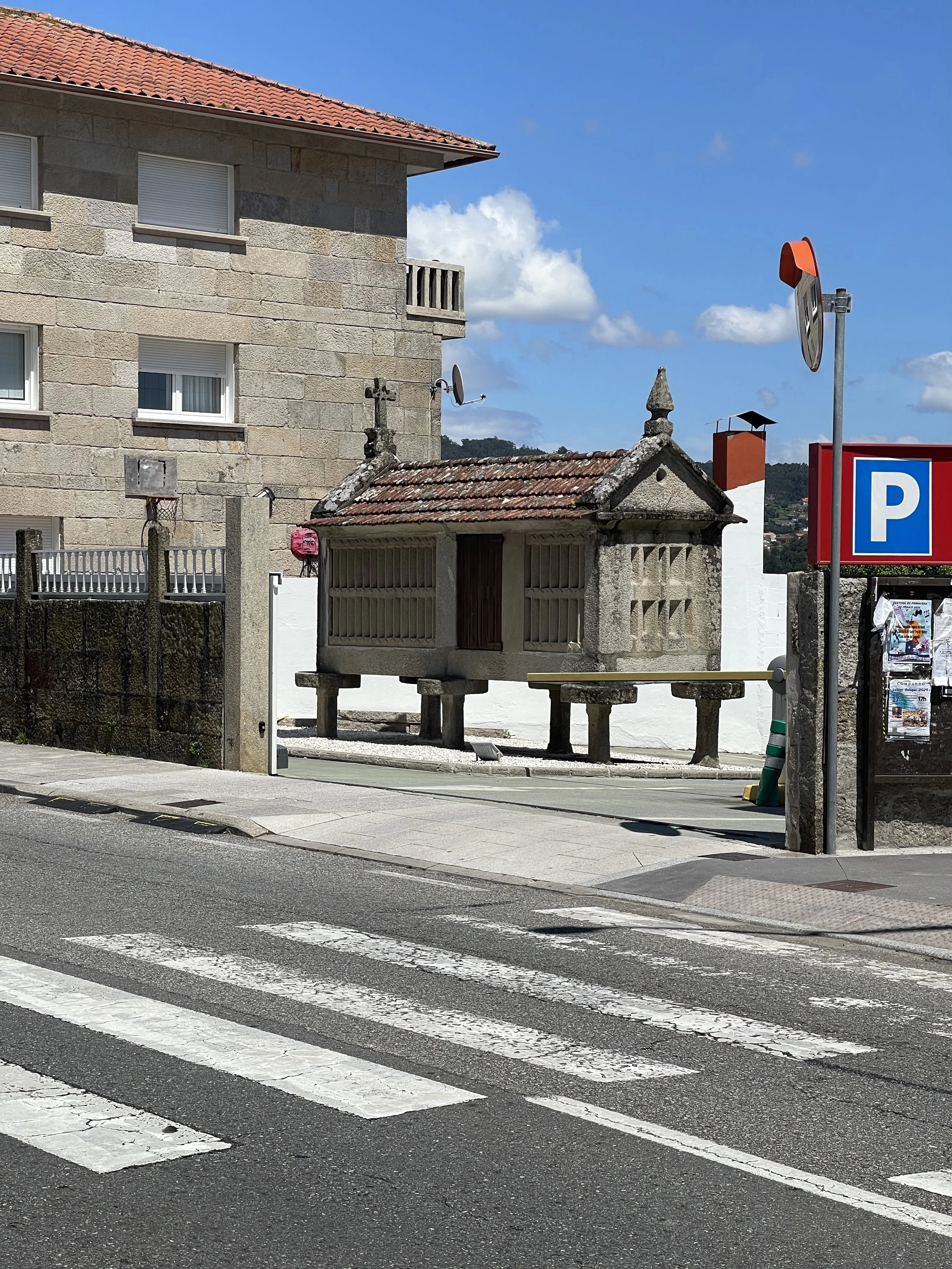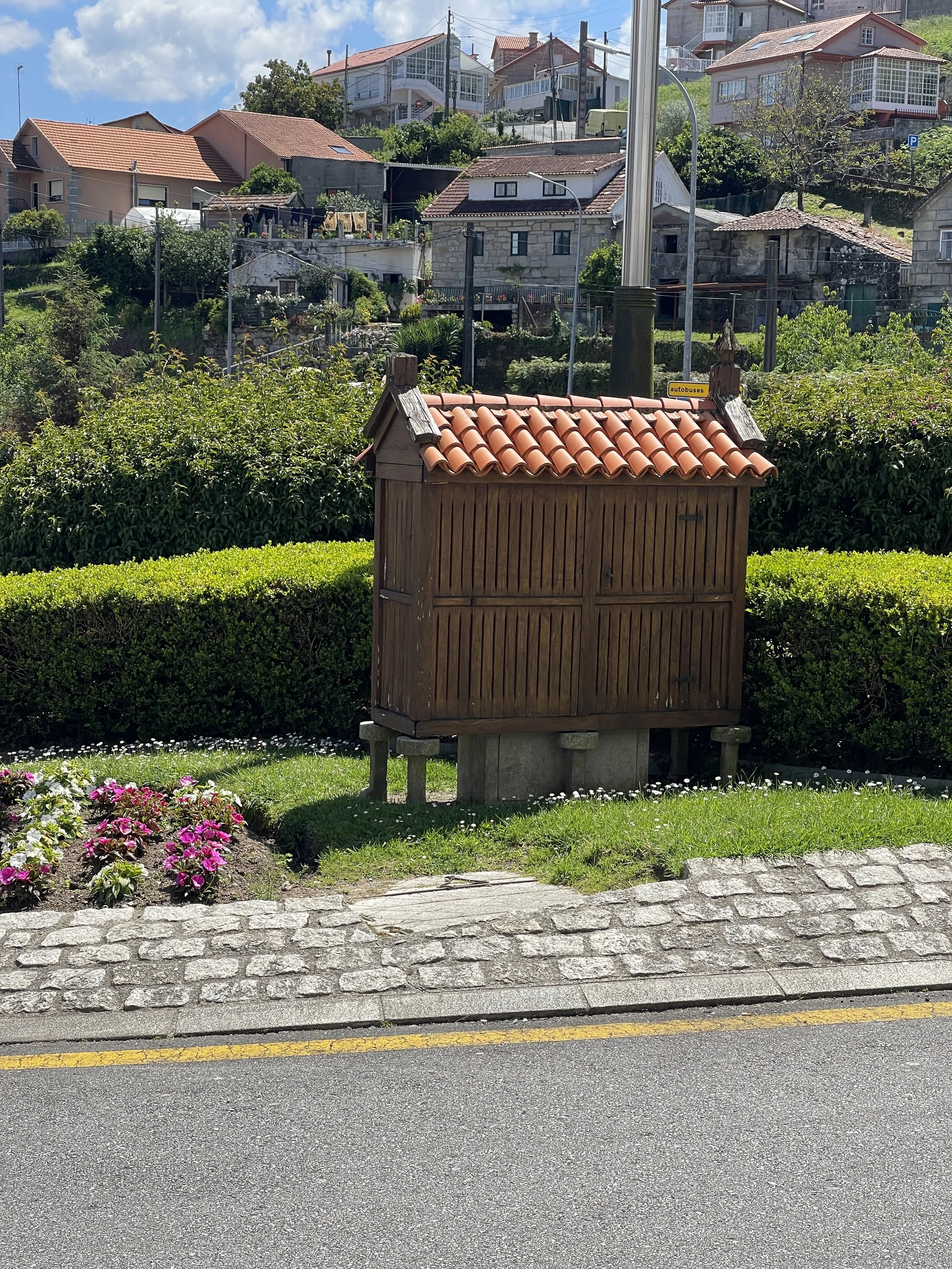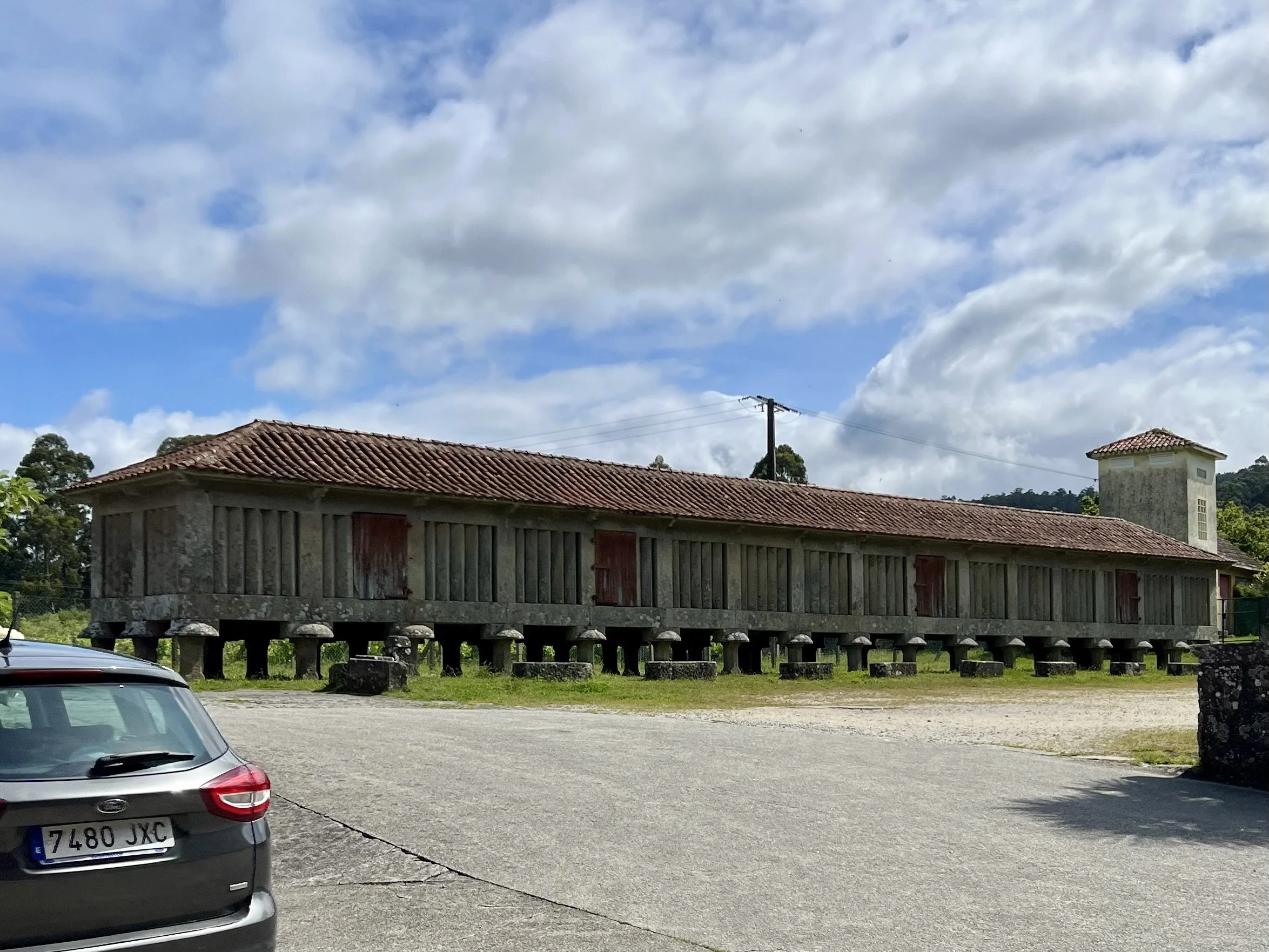Mystery solved! (bg)
Just about everyday during one of our segments we see this kind of structure adjacent to some properties:
Some are bigger. Some smaller. Some are wooden and some concrete. Almost all have at least one cross on the roof ridge and some have two. Each have a small door. We’ve seen them on farms, monasteries, or in shared spaces in small villages. Here are a few more:
And here’s what is rumored to be the largest one in the Galicia region (Northwest Spain).
But we asked ourselves what are they for? They all had a smallish door but a person could crouch to enter. They had these narrow slits on the side to let air in and keep, maybe critters in? Out? The pedestals look intentional but also non decorative. And the cross or crosses at the top? Was it a religious structure? Was it for some temporary burial? Was it for prized chickens to protect them (but cmon - that’s going a bit far on the engineering side.) Do you know? If you do you’re smarter than us, because we were today years old when we found out.
They are Hórreos (pronounced o·rre·os), and they are the traditional grain storage units of Galicia and Portugal. The crosses ask for holy blessing and protection of the contents, the thin slats allow wind to circulate through, but keep birds out, the roofs protect against moisture, but the most innovative feature are the pillar structures that both lift then off the ground AND prevent rodents from climbing up. These pedestals are called “esteous” in Galicia and “espigueiros“ in Portugal and feature a large round disc at the top which the rodents can’t get around without falling back to the ground. Ingenious.
And as usual, the information was shared with us by a Spanish native pilgrim we met today while walking, and by our lodging manager “Fran” here in Combarro. How did we know we were in the right place for the information? Here’s the sign for The Hotel Combarro:





